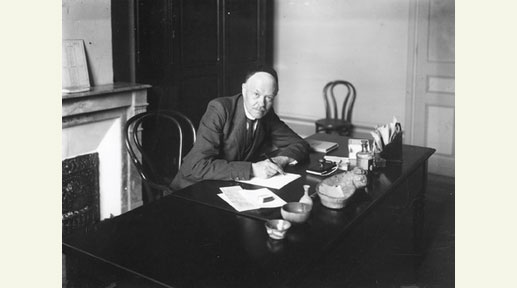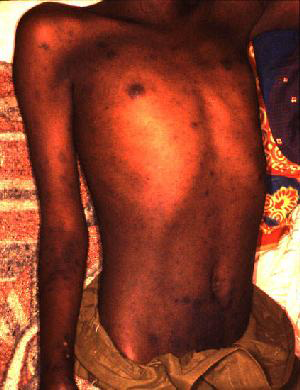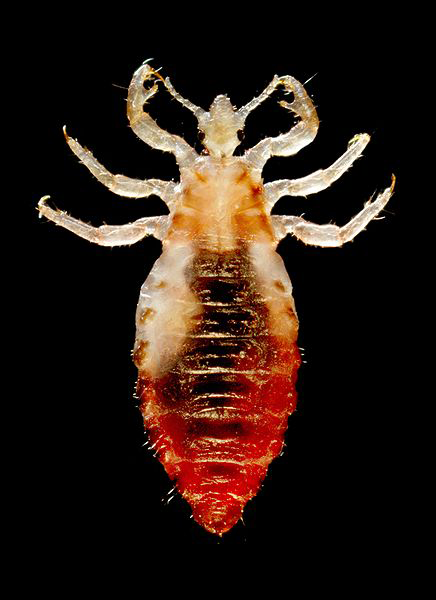Getting Typhus
Today, we get typhus. The University of Houston's college of engineering presents this series about the machines that make our civilization run, and the people whose ingenuity created them.
We expect people to die in wars by guns and bombs, but in fact wars often kill more people by diseases. One of the worst has always been typhus, which makes people terribly delirious with extreme fevers. Most die without modern medicine. It appears that ancient Athens had epidemics of typhus. Many of Napoleon Bonaparte's troops died of typhus in Russia. But for centuries typhus was a mysterious killer - nobody knew how people got typhus.

Charles Nicolle in his office in Tunis, about 1910. Photo Credit: Wikimedia
Charles Nicolle was born in Normandy, France, and studied medicine at the famous Pasteur Institute. After graduation he worked in a small hospital - and he hated it. His colleagues didn't want to hear his modern ideas about disease. His job wasn't secure. And his hearing was so bad he could barely use a stethoscope.
So he took a chance. He went to the French colony of Tunisia to run the Pasteur Institute lab in Tunis. Tunis was very poor and afflicted by many diseases, but typhus was in Nicolle's words, "the most important and the least explored." It was dangerous work. About a third of doctors in Tunisia died of typhus. Nicolle himself was going to go investigate typhus in a prison, but cancelled at the last minute. His two colleagues went without him and died.

Rash in a man with epidemic typhus in Burundi. Photo Credit: Wikimedia
Nicolle was very observant, and he noticed something odd. Typhus patients spread it to other people, including their families and the hospital admissions staff. But once they were in the hospital, they never infected the doctors or the other patients. What had happened to them? Well, they'd been bathed and dressed in new hospital clothes. What difference did that make? It got rid of their lice.

Human body louse, the carrier of typhus. Photo Credit: Wikimedia
Lice were everywhere in Tunis, as they were in military camps and trenches. The word "Cootie" first meant lice on soldiers in WWI. Nicolle first showed that typhus could infect monkeys and guinea pigs, allowing experiments with the desease. And finally he showed that lice were the mysterious carriers of typhus. His work made delousing and insecticides including DDT into standard tools for prevention of typhus.
Nicolle and his colleagues finally managed to eradicate typhus from Tunis, but it's still around. It killed over 20 million people around Russia in the chaos after World War I. In World War II, the famous Anne Frank died of typhus in a concentration camp. And just 20 years ago, 100,000 people got typhus during the civil war in Burundi.

Charles Nicolle at his microscope. Photo Credit: Wikimedia
Nicolle had a very poetic side. In his Nobel Prize lecture he said: "Man carries on his skin a parasite, the louse. Civilization rids him of it. Should man regress, should he allow himself to resemble a primitive beast, the louse begins to multiply again and treats man as he deserves, as a brute beast."
I'm Richard Willson, at the University of Houston, where we're interested in the way inventive minds work.
(Theme music)
Nicolle's Nobel lecture Click here
Charles Nicolle biography Click here
Lice as "Cooties" Click here
How Charles Nicolle of the Pasteur Institute discovered that epidemic typhus is transmitted by lice PNAS Click here
Historical impact of typhus Click here
Medicine.net page on typhus Click here
New England Journal of Medicine story on Nicolle Click here
This episode was first aired on April 25, 2017